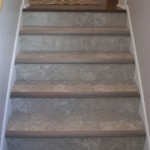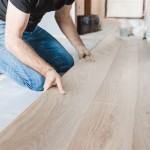How to Remove Carpet Glue from Your Floor
Removing carpet glue from your floor can be a daunting task, but it is achievable with the right approach. Carpet glue, also known as adhesive, is designed to be durable and long-lasting, making it a stubborn substance to remove. The type of glue, the flooring material, and the condition of the glue will all influence the removal process. This article will provide a comprehensive guide to help you remove carpet glue effectively, ensuring you are prepared and equipped for the task ahead.
Understanding Carpet Glue
Carpet glue comes in various formulations, each with its own characteristics and removal challenges. Understanding the type of glue you are dealing with is crucial for selecting the appropriate removal method. Common types of carpet glue include:
- Water-based adhesives: These are typically easier to remove as they soften with water. They are often used for residential carpet installations.
- Solvent-based adhesives: These adhesives are more durable and require stronger solvents for removal. They are often used in commercial settings or for heavy-duty carpets.
- Contact adhesives: These adhesives form a strong bond quickly and are known for their resistance to moisture. They are often used for carpet tiles and may require specialized techniques for removal.
Before attempting to remove carpet glue, it's essential to identify the type of glue and its age. Newer glue is generally easier to remove than older, hardened glue. It's also crucial to consider the flooring material as certain methods might be unsuitable for delicate surfaces like hardwood or tile.
Removing Carpet Glue: Techniques and Tools
Several techniques and tools can be utilized to remove carpet glue, depending on the type of glue, flooring material, and the severity of the residue. The following methods are commonly employed:
1. Scraping and Chipping
For thick layers of glue or dried residue, scraping and chipping can be an effective initial step. Use a putty knife, scraper, or chisel to gently pry off the majority of the glue. Avoid using excessive force, as it may damage the underlying flooring. Be cautious when using sharp tools, especially on delicate surfaces.
2. Chemical Solvents
Chemical solvents play a critical role in softening and dissolving carpet glue. They are available in various formulations, each designed for specific glue types and flooring materials. When using chemical solvents, always follow the manufacturer's instructions carefully, wear appropriate protective gear, and work in a well-ventilated area. Common solvents used for carpet glue removal include:
- Acetone: A strong solvent that is effective for removing many types of glue but can be harsh on some flooring materials. Test it on an inconspicuous area first.
- Mineral spirits: A milder solvent that is suitable for removing water-based adhesives and is less likely to damage flooring.
- Glue removers: Specialized products designed specifically for removing carpet glue. They are typically available at hardware stores and online retailers.
3. Heat Treatment
Heat can soften and loosen carpet glue, making it easier to remove. A heat gun or hair dryer can be used to apply localized heat to the glue residue. Be cautious not to overheat the flooring material, as it can cause warping or damage. Apply heat in short bursts, allowing the glue to cool down before applying heat again.
4. Steam Cleaning
Steam cleaning can be an effective method for removing carpet glue, particularly for water-based adhesives. The high-pressure steam helps to loosen and dissolve the glue, while the extraction process removes the residue. Steam cleaning is best suited for porous flooring materials like concrete or wood. It is not recommended for delicate surfaces like tile or hardwood.
Important Considerations
When removing carpet glue, it's crucial to keep the following in mind:
- Test the removal method: Before applying any solvent or heat treatment to the entire floor, test the method on a small, inconspicuous area to ensure it does not damage the flooring.
- Protect surrounding areas: Cover surrounding areas with plastic sheeting, masking tape, or drop cloths to prevent accidental spills or damage.
- Ventilate the area: Work in a well-ventilated area when using chemical solvents or heat treatments to avoid inhaling harmful fumes.
- Wear protective gear: Always wear gloves, eye protection, and a respirator when working with chemicals.
- Patience is key: Glue removal can be a time-consuming process, so be patient and persistent. It may require multiple applications of solvents or heat treatments to completely remove the glue.
Removing carpet glue from your floor can be a challenging but achievable task. Understanding the type of glue, choosing the appropriate removal method, and taking proper precautions will ensure a successful outcome. With careful planning and attention to detail, you can restore your floor to its original condition and prepare it for its next purpose.

How To Remove Carpet Glue From Wood Concrete Floors Ultimate Diy Guide

How To Remove Carpet Glue And Floor Adhesive View Our Tips

Don T Let Carpet Glue Ruin Your Flooring

How To Remove Carpet Glue Goo Gone

How To Remove Carpet Glue From Concrete Floor Step By Guide

Which Tools And Methods Remove Old Carpet Tile Adhesive Best

How To Remove Glued Indoor Outdoor Carpet

Removing Glue Or Adhesive From Hardwood Floors The Speckled Goat

How To Remove Carpet Glue From Hardwood Floors Servicewhale

How To Remove Glued Carpet Step By Angi
See Also







